 So, spirits should be plentiful here at the cemetery, when talking of the supernatural, of course. However, I’d like to use as a theme, spirits of another kind, while paying homage to a few of those buried here who created, or served up, alcohol during Frederick’s “spirited” past! This time around I will focus on beer for this two-part extravaganza. Some years ago, I had the opportunity to visit the birthplace of one of our Frederick history heroes, whose final resting place is in Mount Olivet. This was none other than Thomas Johnson, Jr. --lawyer, business entrepreneur, member of Continental Congress, military leader during the American Revolution, early U.S. Supreme Court justice, surveyor of Washington, D.C., and Maryland's first-elected governor. Johnson, and his brother James (builder of Springfield Manor near Lewistown) are buried in Area MM, and their colorful lives exemplified "the Spirit of 76!" Both gentlemen, along with another brother, Baker (buried in Area E) are natives of Calvert County. They were born and raised along St. Leonard's Creek, where it flows into the lower Patuxent River. Their ancestral home was called the Brewhouse. Over the past several years, the craft brewery and distillery industry has proliferated in Frederick, often causing historic buildings to be re-purposed with modern equipment and tasting rooms. Examples include today's McClintock Distilling, Steinhardt Brewing, and Brewer's Alley Restaurant. Let's go back in time, to see who was doing the “brewing,” and where did this activity this occur? We can use the cemetery as a "museum of past beer makers." We can return to Frederick’s humble beginnings in the mid-1700s, over 275 years ago. Within a few years of the town’s founding in 1745, three innkeepers were granted licenses to operate ordinaries in Frederick Town. These included Kennedy Farrell, John Cramphlin, and Jacob Beney. At Kennedy Farrell's, one could enjoy a "hot dyet for a gentleman with a pint of small beer" for the price of one shilling, three pence or a "cold dyet" for eight pence. The prices were set by the courts. In putting together this story, I looked at a "like town" (to Frederick) that shares many similarities going back to our humble beginnings in the mid-1700s. I've always thought that Lancaster, Pennsylvania (founded in 1729) is a shining example to compare with Frederick. We had early German families, and particularly farmers and skilled craftsman, from Lancaster who re-located to Frederick. Trade and communication between both towns was particularly strong early on. I soon found A History of Brewing in Lancaster County, Legal and Otherwise by Charles O. Lynch and John Ward Willson Loose. The authors mention that malt liquor beverages were noted first on the scene in the Pennsylvania town, with malt kilns making their appearance in 1745, the year of Frederick Town's founding. Authors Lynch and Loose also report in their study: Although breweries existed from the earliest days of Lancaster, any attempt to draw a clear line of demarcation between innkeepers who were brewers in the back rooms, and brewers who had saloons in the front rooms would be impossible. Late in the eighteenth century certain innkeepers emerged as brewing specialists who eventually conducted breweries primarily. Lancaster's early brewers made their murky, unstable, unpredictable beer and ale in a few tubs, barrels and pails situated in the rear of their inns. Brewing was simply another chore in the operation of inns and taverns, and we are led to believe few innkeepers regarded brewing as much more than a troublesome task which ought not require any more of the busy hosts' time than absolutely necessary. After all, there were other beverages available for quenching thirsts, making toasts, and providing an evening of congenial talk. Brewing had an early presence in Frederick Town, with the Charlton family apparently making beer as early as the mid-1700s. You may recall hearing about an early inn here called Mrs. Charlton’s Tavern. Eleanor (Harrison) Charlton (1723-1793) ran the inn with, and after the death of, her husband Arthur Charlton (1721-1771). Some reports say that the Charlton's son, John Usher Charlton, actually did the brewing, but I failed to find additional proof for this article. Eleanor Charlton was Francis Scott Key's maternal grandmother, and the Charlton family’s tavern was once located at the southwest corner of the town’s Square Corner at Market and Patrick streets—today’s site of Colonial Jewelers. Another oft mentioned tavern of note in Frederick's "olden days" was that of Henry Brother which was once located on the southwest corner of West Patrick and today's Court Street. Today, this is basically the plaza area in front of the Frederick County Courthouse. An old photograph shows a vintage metal, tourist road sign that once marked the site of the tavern and reads that: "George Washington stopped here Thursday, June 30, 1791 in a building on this site known as Col. Henry Brothers Tavern." At the time the above photograph was taken in 1937, the old tavern site was host to an Amoco gas station. I am indebted to a website charleybrother.com which provided plenty of background on this family and their former "residence" on the corner of what was destined to become the original Brewer's Alley of Frederick. It was here across from Brother's Tavern that the funeral procession for George Washington formed on February 22nd, 1800. This was the first observance of the former president's birthday since his death on December 14th, 1799. Thomas Johnson, Jr. would deliver the eulogy for his old friend and compatriot on this day which saw nearly 8,000 residents participate in a procession through the streets of Frederick and culminate with a solemn church service at the Presbyterian Church at the intersection of North Bentz and West Fourth street. The charleybrother.com website's author, Christine Friesel, included a transcript of a memoir written by Henry Brother's son, Valentine (1793-1820) which had been donated to the Frederick Historical Society in 1971 by a gentleman from Vermont. The information therein relayed that Col. Henry Brother was born January 11th, 1745 in "the Black Forest area" of Germany and came to America as an indentured redemptioner. I would later learn the exact location to be Herzogtum, Zweibrucken, part of the Rhineland-Palatinate for those Deutch geography fans. Brother served (for his passage) with Nicholas Boogher (Bucher). Before his servitude had expired, Mr. Boogher died and Henry continued his term under his former master's widow (Eleanor) and her six small children. Interestingly when Henry's indentured servitude was over, he would marry Mrs. Boogher. Henry Brother would come to be known as a a dry goods store and tavern keeper in his adult life. I'm not sure if these were the inventions of Mr. Boogher, or Mr. Brother, but the tavern establishment was known to travelers as the Sign of the Spread Eagle. An earlier inn was operated on the location here by Michael Jesserong who had purchased the property in 1762 from town founder Daniel Dulany. The couple of Henry and Eleanor Brother would have four children of their own, with two dying in infancy. Two sons would grow into adulthood and assisted with the family tavern business. This included Henry, Jr., who would go on to become a hatter in Frederick, and Valentine (b. 1773) destined to take over the tavern upon his father's death. At age 11, Valentine Brother had been put in charge of the tavern accounts, converting these to English from German style, the native language of his parents. He would also accompany his father (also known as Major or Colonel Henry Brothers) on business trips to southwestern Virginia. The establishment would blossom with growing popularity associated with stagecoach travel. Alcohol would certainly play a major part in the hospitality trade and it's certainly no secret that Henry Brother's Tavern served alcohol, and specifically beer. But did the family make their own? Perhaps the following article sheds light on the subject because I spy some pivotal ingredients for brewing beer. From 1778 to 1787, Henry Brother bought various lots in Frederick town including "a new brick house" on the east side of North Market Street between 3rd and 4th streets. He also owned several lots near the corner of Market and Sixth streets. Major Henry Brother died on July 7th, 1791, which is exactly a week after George Washington visited his establishment. Brother's body was laid to rest, not far from the tavern he operated, in the original German Reformed burying ground behind Trinity Chapel. His body would later be reinterred in the congregation's second burying ground at North Bentz and West Second streets around 1803. This is today's Memorial Park, and his remains are still there as an article from November, 1923 mentions his stone belonging to Henrich Bruder complete with German epitaph being buried in the grave as was the fate of nearly 300 other stones when the burying ground was condemned at that time. The table was now set for son Valentine to take over operation of the tavern in 1793 upon his 20th birthday in accordance with his father's last will. In 1793, however, Valentine opened up a grocery and hardware store on East Church Street, having received the blessing of his mother for not taking over the tavern on West Patrick Street at this time. Meanwhile, (brother) Henry Brother would marry a young woman named Elizabeth Pringle (later changed to Brengle) this same year. In theory, Elizabeth could be considered "the girl next door" because her father, Christian Pringle/Brengle, owned Frederick Town Lot #20 directly behind Brother's Tavern and across the town creek. Christian Brengle (b.1738-?) plays into our drawn-out brewing story because he had bought this important parcel located on the northwest corner of West All Saints' and modern day Court streets from Sebastian Derr (of Dearbought fame) in 1774. Derr had bought Lot #20 and the back half of Lot #29 across the creek (and behind Brothers Tavern) from the above mentioned Michael Jesserong in 1767. Christian Brengle would manage Brother's Tavern for a while after Henry and Valentine's stepbrother Frederick Boogher in 1796, and a Capt. James Neal in 1797, are recorded as keeping the “Sign of the Spread Eagle.” He began his shift in 1797 on the family's behalf. Henry Brother would "hang up his hat" and take a turn at running the inn at the close of the century. In a few minutes, I will tell you about a move made by Mr. Brengle that likely provided the establishment with freshly brewed beer on his lot behind the tavern and across Carroll Creek. Meanwhile, Valentine Brother continued the operation of his grocery and hardware business through the 1790s, but became interested in political life. He served as a member of the Maryland House of Delegates in 1795 and 1796 alongside notable citizens buried here in Mount Olivet: George Baer, William Beatty, David Shriver, and Allen Quynn, Jr. He also served in local militia which doubled as a fire department, and became county sheriff. Valentine Brother would own/operate a tavern on Market Street called the Sign of the Fountain Inn. I can't figure out how he could do all he did because he was commissioned on April 17th, 1799 as a Captain in the 9th Regiment for New York by President John Adams and John W. Henry, the War Secretary at Philadelphia. His military appointment had led him to Bath, New York. He came back to Frederick briefly, at which time the family tavern was being run by Basil Williamson. Valentine Brother was honorably discharged on June 15, 1800, just months after participating in Washington's funeral procession which he, himself helped organize and lead. IN 1801, after the birth of his son Henry on George Washington’s birthday (February 22nd), Valentine Brother removed his family and relatives in a caravan to Ontario County, New York and eventually established a farm near Geneva, NY. He represented his county in the New York State Assembly and would die in 1820. He is buried in Old No. 9 Cemetery in Seneca, New York. Now that we have espoused plenty of "Brotherly Love," let's talk beer! An account from the website oldbreweries.com says there was a gentleman named Balser (Baltzer) Heck brewing here in Frederick locally from 1760-1790. This was said to have been a higher end, delicacy beer. Dare I say this could have been Frederick’s first “craft beer.” Even Charles Carroll of Carrollton makes mention of dealing with Mr. Heck, who supplemented his business by selling horses. Balser Heck bought town lot #20, where Asbury Church is now located (on the northwest corner of West All Saints and Court streets), from Christian Brengle in 1777. Heck’s widow would eventually sell it back to Brengle some eighteen years later in 1795 as his last will and testament had directed her to do. This was Mr. Heck’s business site, likely the first of an interesting line of breweries that would operate on this lot on the southside of Carroll Creek, along what was once a narrow alley connecting W. All Saints Street with West Patrick Street. Court Street is a name that would come much later, because the stretch between All Saints and West Patrick became known as Brewer’s Alley. Heck had also bought part of lot #38 from the heirs of his father-in-law (John Linganfelter) in 1787. Balser Heck's son, Charles, sold it to John Hoffman in 1804 who sold it to Job Hunt in 1814. This lot is on the south side of the first block of East Patrick (now 16-20 E. Patrick) where JoJo's Restaurant and Tap House is today. Talk about your extremes for the future—one of Heck's former properties is today the site of a church, and the other is popular bar/restaurant. Frederick City planner Lisa Mroszcyk Murphy wrote in her Preservation Matters article of 2018 that there was yet another historical account noting two brewers in Frederick in 1797, but she didn’t share their names. I assumed that Christian Brengle kept the brewery operation going after making the purchase from Balser Heck's widow. I soon found an advertisement in an old newspaper in which Mrs. Catharine Kimboll (1745-1831) mentions lots for sale on the northside (of the second block) of West All Saints Street, above "Deal’s Brewery." (As a side note, Catharine (Grosh) Kimboll was another notable early businesswoman of Frederick Town like Eleanor Charlton. She ran a tavern on West Patrick Street from 1797-1828 that hosted many early statesmen and would eventually become the City Hotel, Frederick's prime lodging spot throughout the century, eventually yielding to the Francis Scott Key Hotel that would be built on its original footprint). I soon determined the exact identity of this Mr. Deal thanks to land research conducted with my trusted assistant, Marilyn Veek. We found that Mr. Brengle sold the property in 1795 immediately after gaining possession of it again from Balser Heck's widow. It was transferred to Frederick Diehl of Adams County, Pennsylvania. After painful study of land deeds and census records, we deducted that Frederick Diehl was the financier here, and possibly the brains as well, but not the on-site brewer. It appears that he had set up his son, Abraham Diehl, to oversee the brewing operation here on Carroll Creek in the same location that Balser Heck had previously utilized. I found Abraham living in Frederick in the 1800 US Census, however I couldn't land any articles or advertisements in local newspapers readily available to me. Perhaps the target audience for his product was the local tavern community, or perhaps his father's base in Pennsylvania? In late June, 1807, there appeared to be a flurry of activity at the county courthouse in respect to property holdings between father and son. One of the most interesting deeds had listed the equipment utilized for the brewing operation itself including two copper stills and a copper heater. Frederick Diehl appears to have come to Frederick to operate the brewery himself at this time. A wool mill also came about across the creek to the north of the brewery here. Regardless, the Diehl's ownership of the brewery would cease in 1809 when the operation was purchased by a Christopher Haller. In Lisa’s Preservation Matters article on early brewers, she included info from the 1810 census noting four breweries in Frederick producing 730 barrels of beer valued at $4,380. One of these likely belonged to a man named George Carl Gelwick (1741-1817), a native of Hanover, PA. Gelwick could earlier be found operating a brewery in Hagerstown in 1798. I have reason to believe that at least two breweries were operating on Carroll Creek in the general vicinity of todays Frederick County Court House. As for Gelwick in Frederick, I found his approximate location to be on West Patrick Street near the bend, with his property backing up to Carroll Creek. His obituary reports that he was a brewer and an innkeeper. I did learn that Gelwick is buried in Hagerstown's Rose Hill Cemetery, but could not find Balser Heck's final remains whereabouts, but I assume they were placed in one of Frederick's original downtown graveyards. Now an early Frederick brewer that I know is in Mount Olivet is one Andrew Thomson (c.1771-1822). However, he is buried in an unmarked grave in Mount Olivet's Area NN/Lot 134. He was originally laid to rest in the town’s Presbyterian burying ground, once located on the southwest corner of North Bentz and Dill Avenue where Washington's funeral was commemorated in February of 1800. I don't know where Mr. Thomson conducted his "mixology," but I strongly believe that he took over Mr. Gelwick's brewery upon the gentleman's death in 1817. Meanwhile, on lot #20 along Brewer's Alley, Mr. Haller had sold the former brewery of Mssrs. Diehl and Heck to John Baker. Frederick's tavern scene was on the rise thanks to the National Pike coming through down via Patrick Street. By 1825, Frederick had 19 "public houses," most located on Patrick and Market streets. Other local taverns than the Sign of the Spread Eagle and Fountain Inn that were formerly kept by the Brother family included names such as Sign of the Sorrel Horse, Sign of the Seven Stars, Sign of the Eagle and Review, Washington Inn, Globe Inn, Sign of the Sheaf of Wheat and Plow, Sign of the Ship, Black Horse Tavern and many more. The demand for this beer would grow locally, but as the Baltimore & Ohio Railroad would reach Frederick in 1831, beer could now be transported more efficiently from Baltimore as opposed to long stagecoach rides to "Charm City" taking up to 18 to 24 hours. As we have established, during much of the 19th century, the east side of today's North Court Street between Patrick and Church streets boasted saloons and hotel “bars” on each corner. A block south, the west side of South Court Street became formerly known as Brewer's Alley, and was home to a substantial brewery that extended between All Saints Street and the creek. The Diehl's carding factory would be re-purposed by a man named Gideon Bantz who built a mill and leather tanning operation on the north side of the creek. By chance or design, Brewer’s Alley actually extended beyond West South Street, with this stretch playing home to the town’s eventual ice plant. Later, this particular thoroughfare would take the equally fitting name of Ice Street. Regardless, ice would play an important role for the brewer’s and their products. There are no physical signs of the breweries here today, but the name of course is kept alive thanks to Phil Bowers naming his "brew-pub" on North Market Street, Brewer’s Alley. This month (July, 2023), the popular restaurant is celebrating its 26th anniversary. Frederick's tradition of local brewing and saloon style hospitality is on display each and everyday here, and at their Monocacy Brewing location and tasting room located at 1781 North Market Street. By the way, the new Brewer’s Alley Restaurant location was once Frederick City Hall, and played home to the legendary City Opera House. The previous building at the Brewer’s Alley restaurant site was known as the Market House and was built in the 1760s and replaced in the 1873 with the current structure. Captain William Small Before my recent discovery of the mysterious "Mr. Deal," a gentleman named William Small was another early known brewer to take up operations on Brewer's Alley after buying a number of lots in the year 1830. A shoemaker from the York, PA area, he was German and his name was originally spelled “Schmahl.” At a time when we did not have a fancy and attractive flood control project, properties adjacent the creek had their definite upsides and downsides. Adequate, and convenient, water source for drinking, industry, clothes-washing etc. was great, but the constant threat of flooding and swamp-like conditions in a low-lying floodplain was not ideal and brought several other problems. This early brewery was located on the south side of the creek, where we've established that Asbury United Methodist Church sits today. Capt. Small gave me the opportunity to "check my work" as Marilyn and I found deed documents that traced back previous owners of the original brewery property on Carroll Creek. Small obtained the brewery from John Kunkel, who bought the operation at a sheriff's sale. The former owner, John Baker seems to have defaulted on his mortgage to Christopher Haller from whom he had bought the brewery in 1814. Haller purchased the location from Frederick Diehl who apparently came back into the operation for a few years when son Abraham sold the property and all brewing utensils to his father in the year 1807. Few other details are known about the brewery under Small, which operated under him up through 1852 supposedly. However, Frederick diarist Jacob Engelbrecht wrote in his diary On July 27th, 1837 that "Messers. Captain William Small, George Rohr & Michael Schuh left here a few days since for St. Louis. Missouri to carry on brewing." We do know some things about his personal life and civic involvement. William Small married Maria Turbott in September, 1826 (daughter of Capt. Nicholas Turbott). She would die in 1836, and is buried here in Mount Olivet. Capt. Small would remarry Elizabeth Hewitt of Baltimore two years later. As for William, he served as a city councilman in the 1830s and also commanded a militia company called the “Independent Blues.” I found a reference in the 1842 minutes of the House of Delegates to furnish Captain William Small with 50 muskets of the 1841 Harpers Ferry make. Capt. Small died in 1845, but it is said that his family continued to hold the brewery up through 1852. Jacob Markell would succeed Captain Small at this location, and a few more would follow growing the operation to its greatest success at this very location. Meanwhile, another brewer had located himself nearby to the immediate west and on the north side of the creek as I had alluded with the Gelwick and Thomson brewing operations. A force to be reckoned with would be another German named John George Lipps. More on him and the others next week in Part 2 of this intoxicating "Story in Stone." 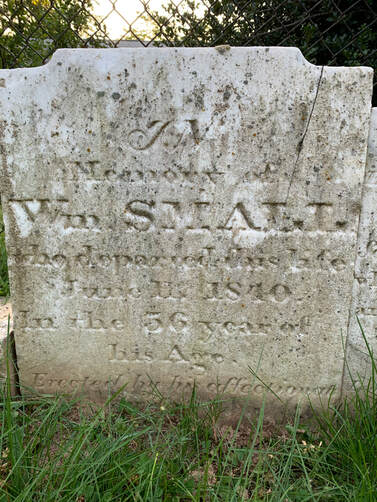 I immediately thought that this grave in Mount Olivet's Area NN, a short distance from the grave of Maria Small, was that of Capt. William Small. NOPE! The dates don't match up as Capt. Small did not die in 1840. Instead, he died in July 1845. The search for the grave sites of some of our early brewers continues! History Shark Productions presents:
Chris Haugh's "Frederick History 101" Are you interested in Frederick history? Want to learn more from this award-winning author and documentarian? Check out his latest, in-person, course offering: Chris Haugh's "Frederick History 101," with a 4-part/week course on Tuesday evenings in late August/early September, 2023 (Aug. 22, 29 & Sept 5, 12). These will take place from 6-8:30pm at Mount Olivet Cemetery's Key Chapel. Cost is $79 (includes 4 classes). In addition to the lecture class above, three unique "Frederick History 101 Walking Tour-Classes" in Mount Olivet Cemetery will be led by Chris this summer. These are available for different dates (July 25th, Aug. 8th and Aug 23rd) Cost $20. For more info and course registration, click the button below! (More courses to come)
1 Comment
Judith Candela
7/23/2023 01:32:11 pm
I enjoyed reading this article posted by Joan Deacon and hope to be able to read Part 2 somehow, some time soon.
Reply
Leave a Reply. |
STORIES
|
Archives
July 2024
June 2024
May 2024
April 2024
March 2024
February 2024
January 2024
December 2023
November 2023
September 2023
August 2023
July 2023
June 2023
May 2023
April 2023
March 2023
February 2023
January 2023
December 2022
November 2022
October 2022
September 2022
August 2022
July 2022
June 2022
May 2022
April 2022
March 2022
February 2022
January 2022
December 2021
November 2021
October 2021
September 2021
August 2021
July 2021
June 2021
May 2021
April 2021
March 2021
February 2021
January 2021
December 2020
November 2020
October 2020
September 2020
August 2020
July 2020
June 2020
May 2020
April 2020
March 2020
February 2020
January 2020
December 2019
November 2019
October 2019
September 2019
August 2019
July 2019
June 2019
May 2019
April 2019
March 2019
February 2019
January 2019
December 2018
November 2018
October 2018
September 2018
August 2018
July 2018
June 2018
May 2018
April 2018
March 2018
February 2018
January 2018
December 2017
November 2017
October 2017
September 2017
August 2017
July 2017
June 2017
May 2017
April 2017
March 2017
February 2017
January 2017
December 2016
November 2016












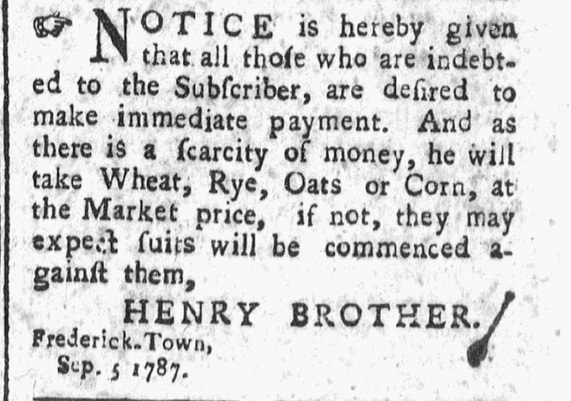









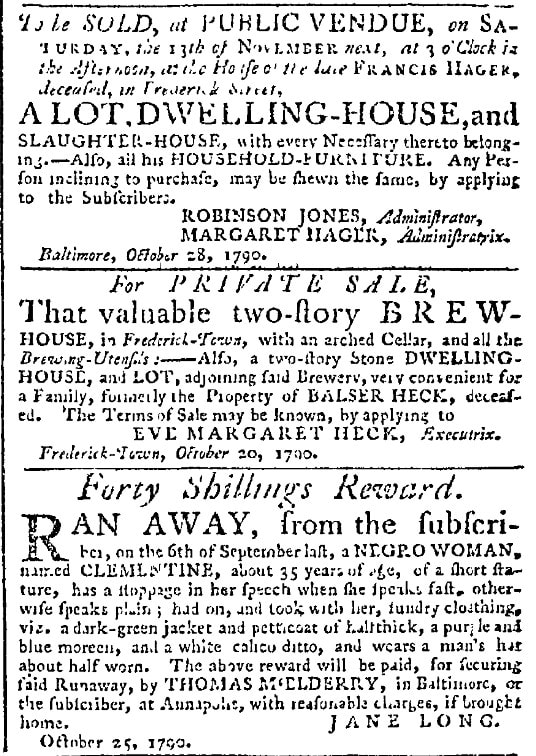






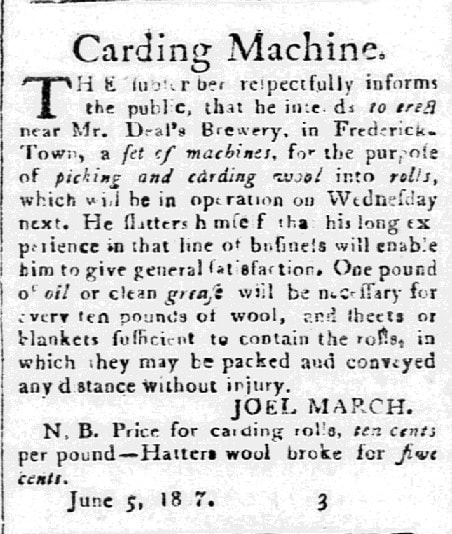





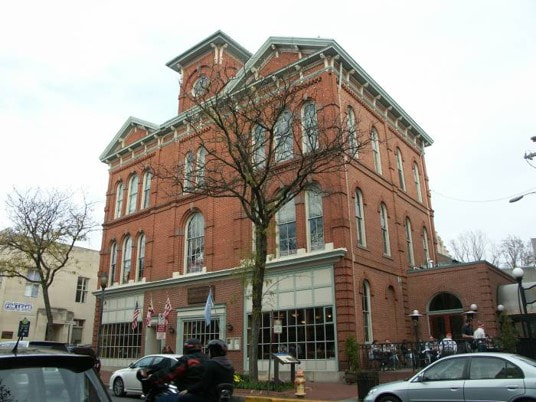

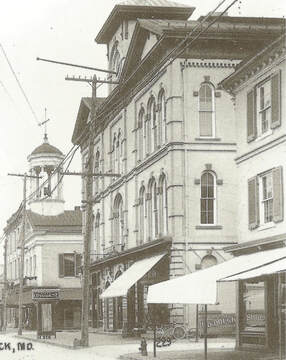









 RSS Feed
RSS Feed